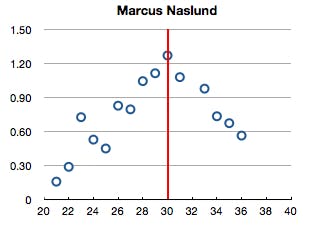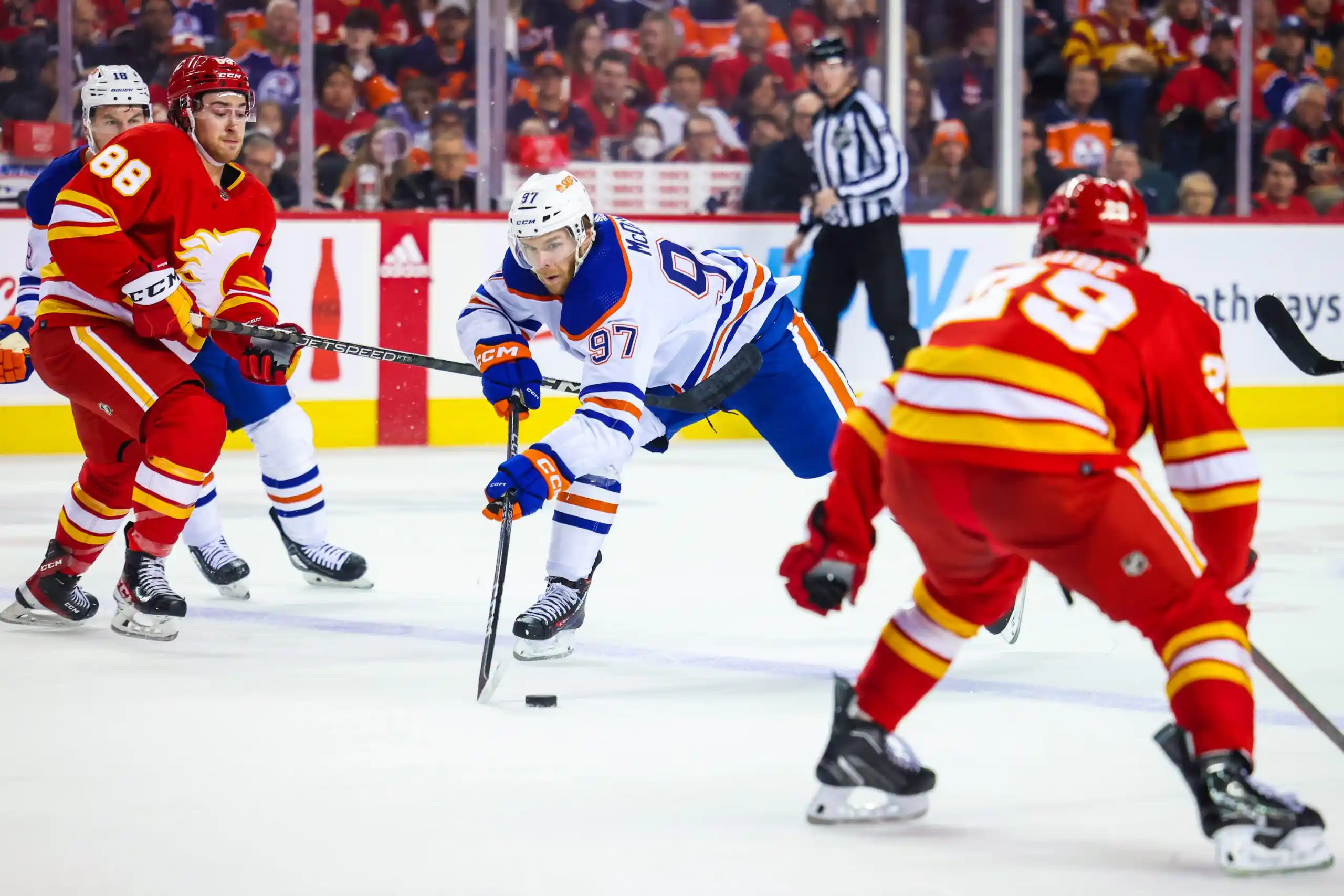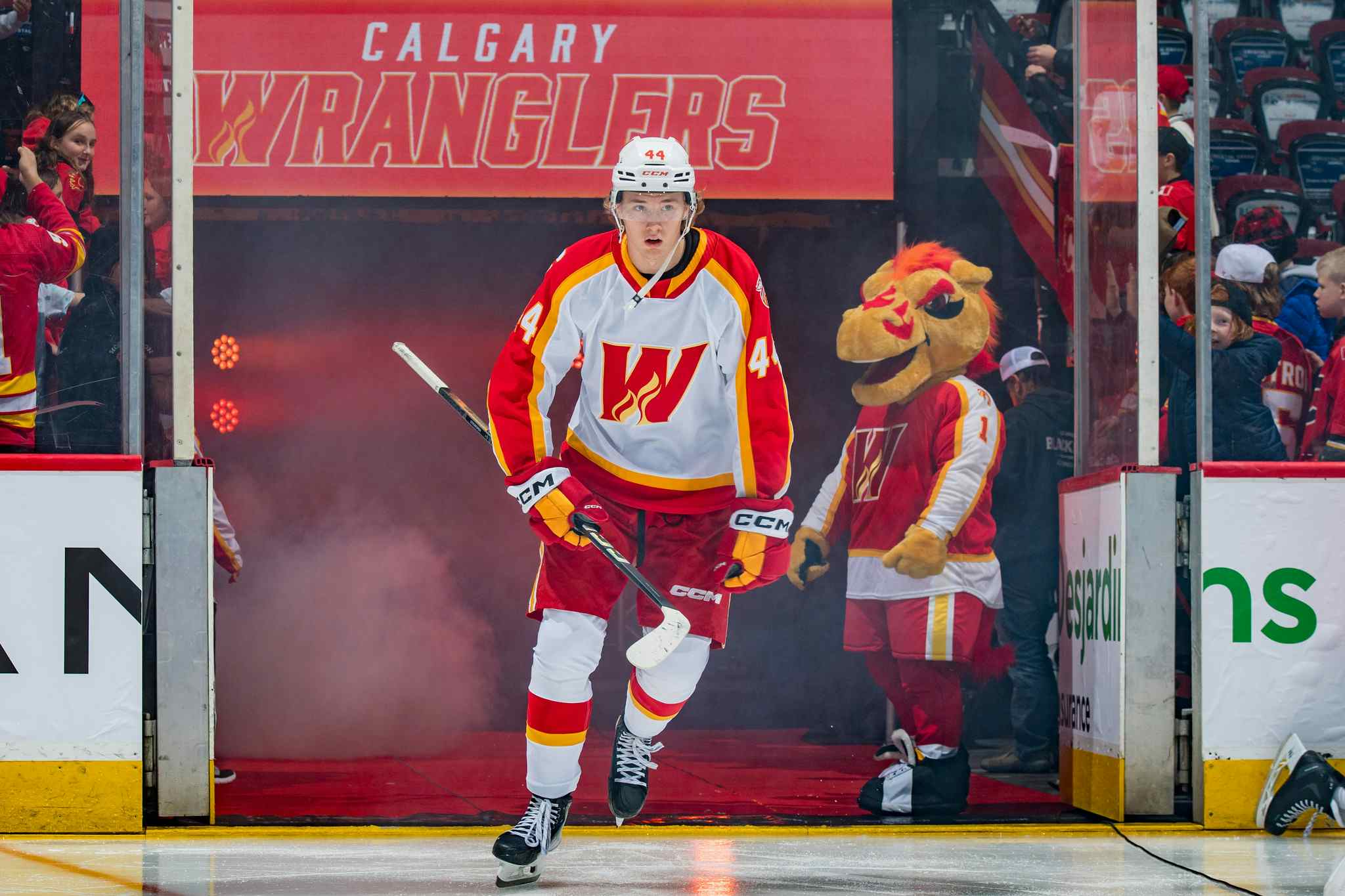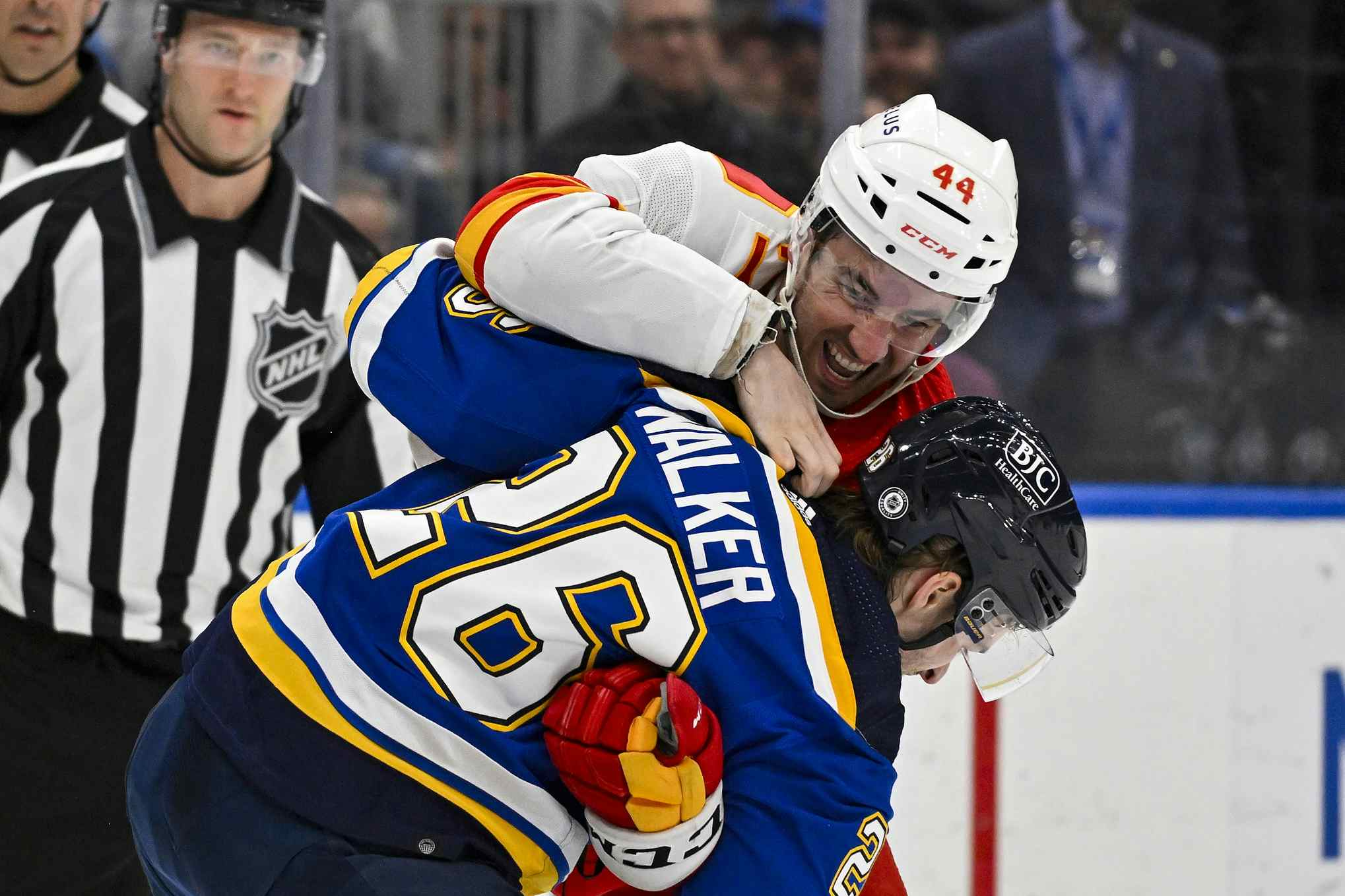The Question of Jarome Iginla – Part 2
By Kent Wilson
14 years agoIn part 1, we established that Iginla struggled relative to expectations (and his cap hit) this past season. It was perhaps an unncessary bit of data-mining for those that watched him this season since simply observing his play on a nightly basis was enough to establish that Jarome was off in 2009-10. That said, it’s always good to check one’s perceptions against measures of performance.
In part 2, we’ll look compare Iginla’s season in context of his career arc. In part three, I’ll investigate what it might mean for the organization and his future in Calgary.
The Decline
There’s plenty of evidence that NHL hockey players, in general, begin to slow down after the age of thirty. The slope and severity of the decline ranges from player to player, but time always wins out in the end. It’s merely a question of when a player succumbs to the rigors of the game.
I considered beginning this section with Iginla himself, but figured the object lesson of Marcus Naslund would be more instructive. Mainly because most readers will remember Naslund: both in his prime and his recent step into the elevator shaft of obsolesence. Iginla and Naslund battled for the "best player in the league/western conference" earlier in the decade when the latter was tearing through the competition as part of the "West Coast Express" (Morrison-Bertuzzi-Naslund) for the Vancouver Canucks. Here’s his career point-per-game pace plotted by age:

Naslund peaked at 30, scoring 104 points in 2002-03. He had two seasons within range before and after the apex, but as you can see, things went south pretty rapidly once he was on the wrong side of the big three-oh. He lost his 32 year old season to the lock-out (although he performed well in the SEL at the time) and was still a PPG player at 33, but fell precipitously out of the ranks of the elite after that point. He would go on to score 60, 55 and 49 points in his final three seasons (34, 35, 36 years old respectively) before ultimately retiring. The take-away from this is: despite dominating the league at 30, Naslund was nonetheless a medicore NHL player by the time he was 36 years old.
Here’s Iginla’s career to-date:

Jarome’s progression isn’t quite as tidy as Naslund’s, but the trends are there. Similar to the former Canuck captain, Iginla peaked a bit later than usual in his career with his 1.34 PPG season in 06-07 (94 points in 70 games) as a 29 year old. It’s been downhill since then, but with a couple of seasons at least in range of the apex.
Now, none of this is meant to suggest that Iginla will necesarrily follow the path of Naslund and become a ragged facisimile of his former greatness by middle age. However, what this little case study does establish is that’s it’s possible: three years removed form a peak season is a long time once a player has entered the twilight of his career.
Of course, points-per-game can be a rather poor measure of the overall quality of a players ability. Factors beyond his control can either elevate or surpress a guys scoring, potentially masking the true value of his efforts. In order to determine whether the recent down-turn is reflected in other aspects of his game, I investigated Iginla’s underlying numbers over the last few seasons or so:
Production Efficiency – Even strength
2007-08 – ESP = 65, ESP/60 = 2.85
2008-09 – ESP = 57, ESP/60 = 2.46
2009-10 – ESP = 48, ESP/60 = 2.08
production efficiency – power play
2007-08 – PPP = 33, PPP/60 = 5.37
2008-09 – PPP = 32, PPP/60 = 4.39
2009-10 – PPP = 21, PPP/60 = 3.72
Efficiencies walk hand-in-hand with point-per-game pace, so the fact that he’s regressed across the board shouldn’t be too surprising after glancing at the graph above. However, a similar trend can be observed in his possession numbers:
Corsi (raw/per 60)
2007-08 – +313, +13.46/60
2008-09 – +199, +8.81/60
2009-10 – +14, +0.59/60
Corsi is mostly moderated by quality of opposition and starting position. The former didn’t change much for Jarome over the seasons given the fact that he’s frequently targeted by opposing coaches. As such, he ranked inside the Flames top three in terms of quality of opposition each year.
Starting position or "zone start" is where a player begins each shift. More offensive zone starts tends to inflate a guys corsi rating. Iginla was around 53% in terms of offensive zone to defensive zone face-off ratio in both 07/08 and 09/10, but was actually well clear of that in 08-09 (58.5%) thanks to the team’s overall ability to move the puck north and Keenan’s penchant for setting up the top guys to succeed offensively. Adjusting for zone starts makes the decline even more pronounced:
Adjusted Corsi
2007-08 – +274, +11.78/60
2008-09 – +105, +4.63/60
2009-10 – (-21), -0.89/60
The fact that Iginla was theoretically underwater in terms of possession is perhaps the most disturbing result from the recent season. What’s more, it’s not out of line with the trend we see here: for example, despite the fact that the Flames were excellent in terms of possession in 08-09, Iginla himself was rather middling. These are surer signs that Jarome has left his elite years behind him.
There are other indications that the captain is no longer driving results. Not only has his power play production rate slipped every season since his peak in 06-07, so has his effect on the club’s production as a whole. In 07-08, the Flames GF/60 rate with Iginla on the ice during the man advantage was 7.69. With him on the bench, it was a ghastly 2.38, for a difference of 5.31 goals per hour. No other Flames skater was remotely within range.
In 08-09, the team managed 6.58 GF/60 with Iginla on the ice and 4.39 with him on the bench (+2.19/60 difference). He trailed the likes of Mike Cammalleri (+3.01) and Dion Phaneuf (+3.22) in terms of regular PP contributors that year.
This past season, however, was perhaps the first of his career where Iginla didn’t drive results on the PP. As noted, his PPP efficiency was mediocre, as was the club’s goal rate with him on the ice (5.26/60). Perhaps most telling though, is the fact that the Flames actually scored more often with Iginla watching the action (5.42/60, -0.16/60). That’s especially egregious because Iginla played on Calgary’s "first PP unit" and was therefore gifted the clubs (ostensibly) superior line mates. In addition, it’s not like the Flames had a second unit featuring the likes of Thornton or Ovechkin, meaning the difference can’t be claimed to be driven by a really effective second set of players. By way of comparison, Rene Bourque was a difference maker to the tune of +1.01 goals per hour, while waiver wire pick-up Nigel Dawes was up around +2.08/60. Even Daymond Langkow, who had a pretty blah year in terms of offense himself, was on the positive side of the ledger (+0.98/60). So either Iginla wasn’t very good this year or was very, very unlucky. Going by the data and my own observations, I’d say it’s likely the former.
Of course, none of this guarantees that a rebound year is out of the question. In fact, I assume the Flames will improve offesively next season primarily because they can’t possibly get any worse. If the club draws a few more penalties and Iginla spends more time on the PP, for example, his counting stats and PPG pace will increase as a matter of course. However, the Flames decision makers should be mindful of the overall trend in Iginla’s play as well as the general tendency for NHL skaters to break down after the age of 30. Even if Jarome manages to bounce back next year, I would suggest the chances he will sustain those gains through his 34, 35, 36 year old seasons at "slim" given the information we have. Which ultimately brinds us to the question at hand – whats to be done with Jarome Iginla?
We’ll look at that in part 3.
Recent articles from Kent Wilson






